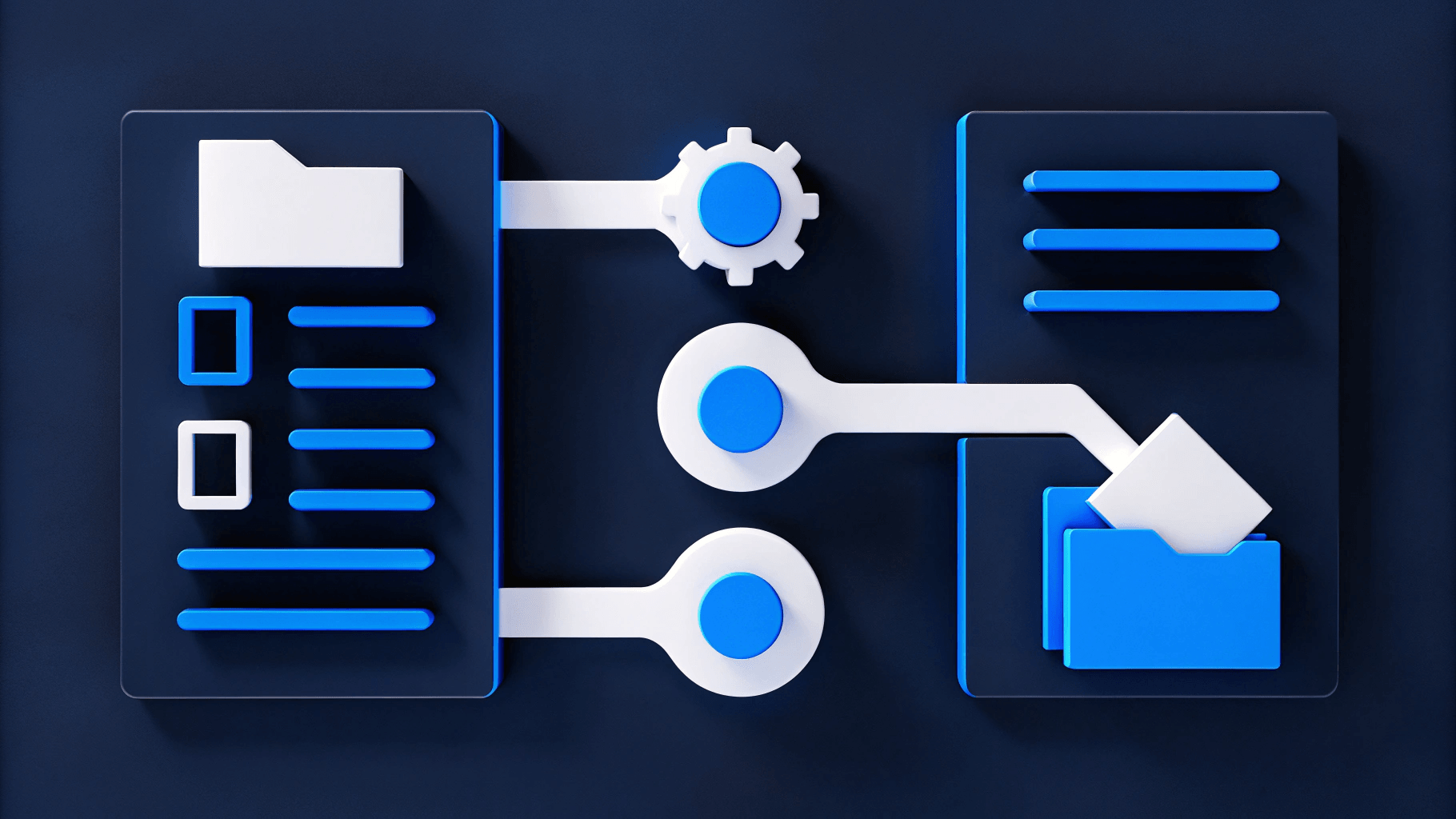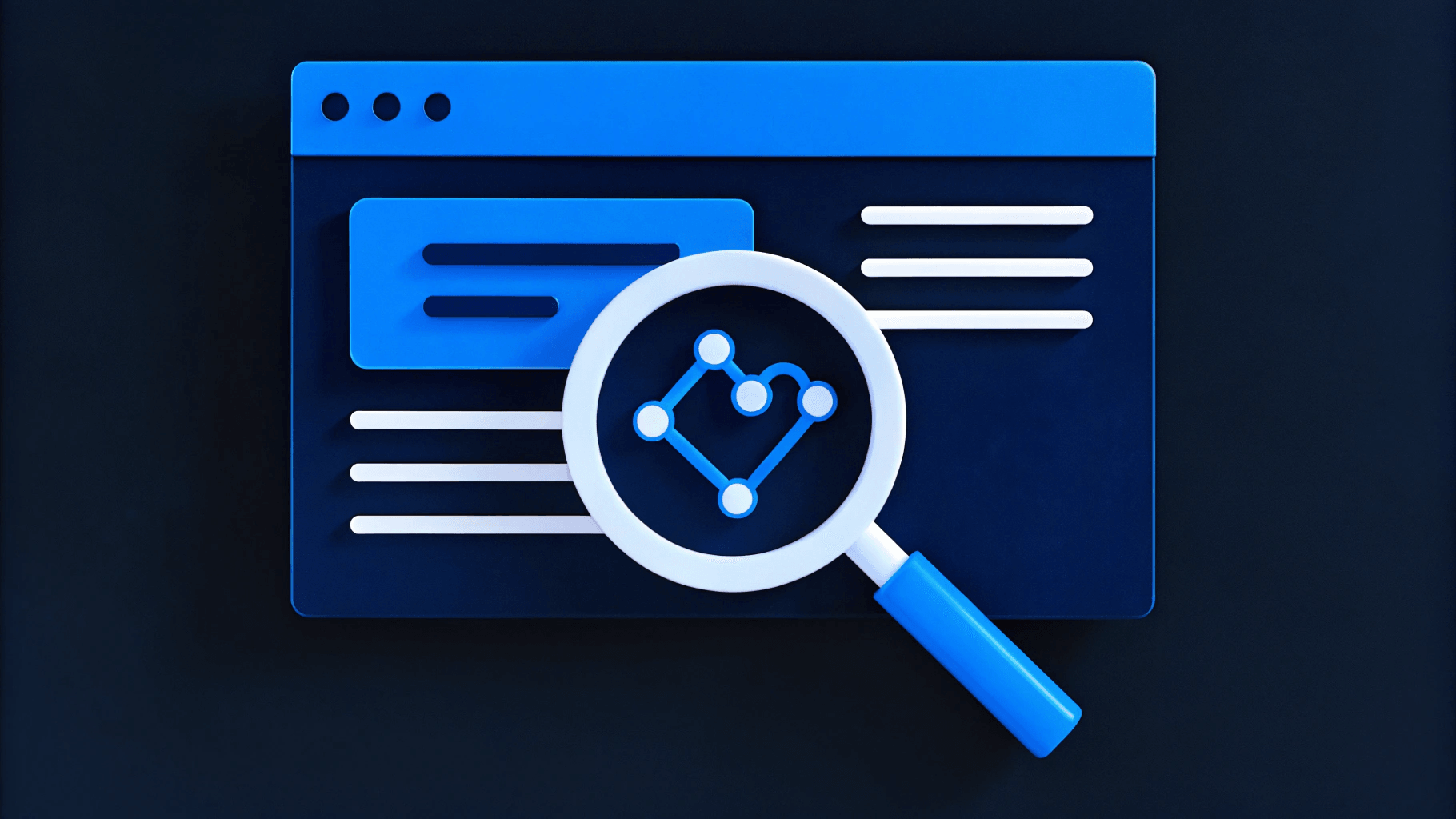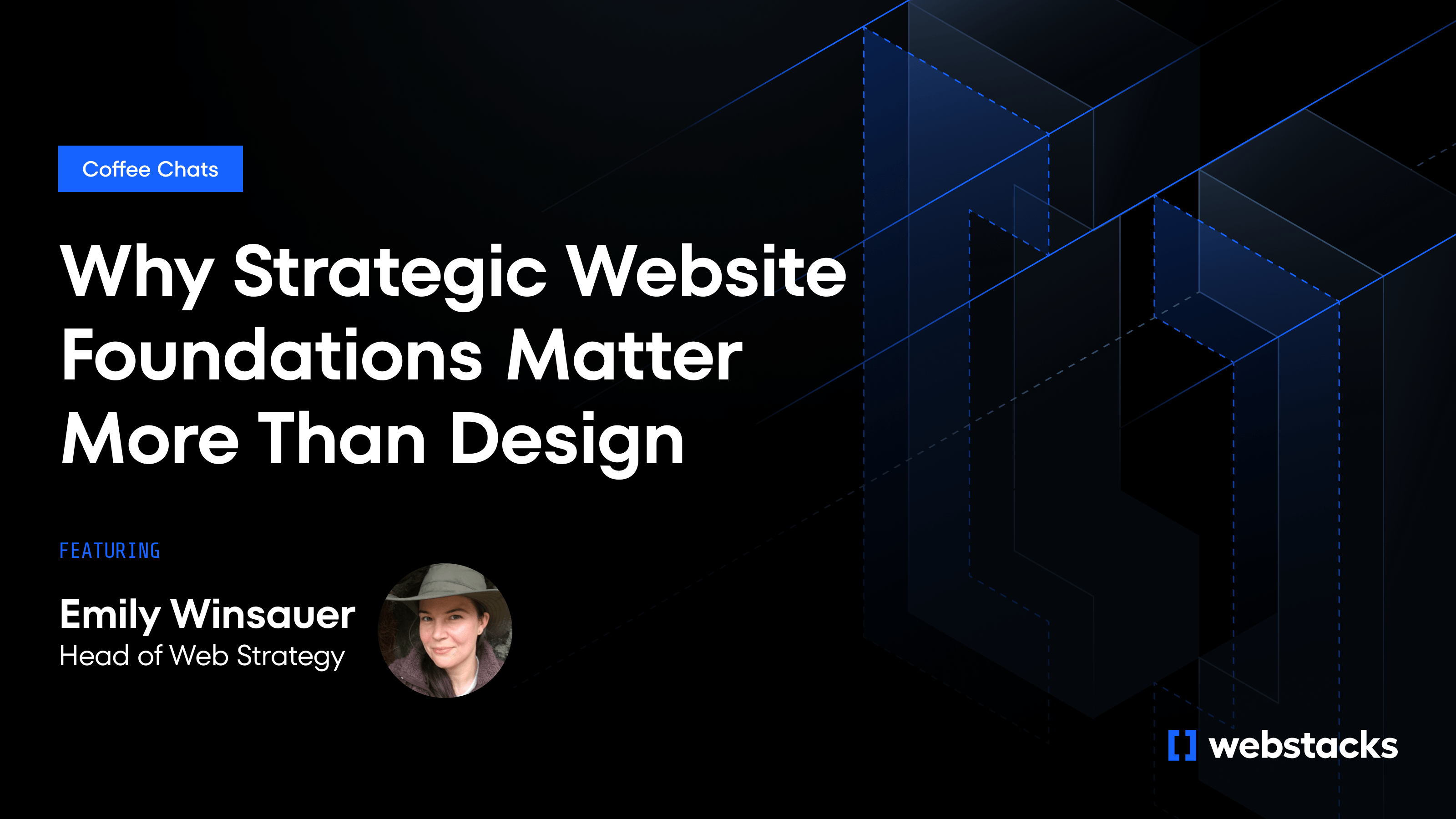Marketing teams are expected to produce more content, faster, while proving ROI on every asset. Manual optimization can't keep pace with these demands. Content teams face competing pressures: scale production, improve performance, and maintain quality—all without adding headcount. Manual optimization workflows create bottlenecks that limit growth and leave high-performing content opportunities untapped.
Automated content optimization enables marketing teams to scale high-performing content without increasing workload by automating technical and repetitive tasks. This frees marketers to focus on strategy, creativity, and insights that drive measurable business outcomes. This guide provides a practical framework for implementing automated content optimization—from foundational infrastructure to advanced AI-powered workflows—with clear steps, tools, and expected outcomes.

What Is Automated Content Optimization?
Automated content optimization uses AI, workflow automation, and structured data to continuously improve content performance across SEO, engagement, and conversion metrics without manual intervention for every update.
Successful automation requires four interconnected systems working together:
- Content auditing and scoring: Automated performance analysis identifies underperforming assets and prioritizes optimization opportunities based on business impact.
- SEO optimization: Keyword mapping, meta generation, internal linking, and structured data implementation happen systematically rather than sporadically.
- Content refreshing: Systems identify decay patterns, suggest updates, and in some cases apply low-risk improvements automatically.
- Distribution and personalization: Dynamic content serving adapts to audience signals, behavioral triggers, and channel performance data.
This approach matters now because search algorithms and AI models increasingly prioritize fresh, structured, high-quality content. Marketing teams are resource-constrained but accountable for pipeline contribution. Composable web architectures and headless CMS platforms make automation technically feasible in ways that weren't possible five years ago.
Automation doesn't replace strategic content direction, brand voice, subject matter expertise, or creative storytelling. These remain human responsibilities. Automation handles the technical and repetitive work that prevents marketing teams from focusing on what drives differentiation and growth.
Why Marketing Teams Must Automate Optimization
Manual optimization creates a persistent bottleneck. Content decay happens faster than teams can address it manually. A blog post that ranks well today can lose significant traffic over time without updates. SEO improvements, meta rewrites, and internal linking often require developer time, creating dependencies that slow everything down. Performance data exists in analytics platforms, but it isn't actionable without manual analysis and interpretation.
Automated optimization delivers measurable benefits across efficiency, performance, and scalability. Teams free capacity for strategic work by automating repetitive tasks. Automated SEO and refresh workflows help ensure content stays current and competitive. Marketing teams can maintain or improve content quality while increasing output, and they connect content performance directly to pipeline and revenue metrics with better attribution.
B2B SaaS marketing teams managing 100+ content assets benefit most from automation. Growth-stage companies scaling content operations see immediate returns. Enterprises with distributed content ownership gain consistency and governance that manual processes can't provide.
1. Build Foundational Content Infrastructure and Data Hygiene
Automation requires clean, structured data. Without it, AI tools amplify existing problems rather than solving them. Infrastructure comes first because every subsequent optimization workflow depends on data quality and accessibility.
Headless CMS with Structured Content Models
A headless CMS (Contentful, Sanity, Builder.io) separates content from presentation, enabling automation tools to access and manipulate content via APIs. Define structured content types (blog post, landing page, case study) with consistent metadata fields. Metadata provides the structured information automation tools need to analyze, categorize, and optimize content systematically. Every asset should include:
- Target keywords
- Author
- Publish date
- Last updated date
- Performance tags
This structure allows automation tools to query, analyze, and update content systematically.
Centralized Analytics and Event Tracking
Implement GA4, Segment, or similar platforms with a consistent event taxonomy. Consistent tagging enables automated systems to understand which content drives specific business outcomes, making optimization decisions data-driven rather than guesswork. Tag content by:
- Type
- Topic cluster
- Funnel stage
- Business objective
Enable UTM tracking and attribution for all content distribution channels. Centralized analytics provide the performance data that powers automated audits, scoring, and optimization decisions.
Content Inventory and Tagging
Audit existing content and assign metadata (topic, persona, intent, funnel stage). Use AI tools to automate initial tagging through topic modeling and entity extraction. Maintain a single source of truth in Airtable, Notion, or CMS custom fields. A complete, well-tagged inventory is the foundation for every automated workflow that follows.
With this foundation in place, marketing teams have a clean, queryable content library ready for automated analysis and optimization. Teams can now build workflows that act on this foundation rather than spending weeks organizing data manually.
2. Automate Content Audits and Performance Scoring
Manually reviewing hundreds of pages for performance issues is time-prohibitive and inconsistent. Automated audits solve this by continuously evaluating content health and surfacing optimization opportunities based on objective criteria.
Performance Scoring Framework
Build a scoring system that evaluates content across multiple dimensions. Each dimension reveals different aspects of content health, and together they provide a complete picture of what needs attention and why.
SEO health measures the technical factors that determine whether search engines can index and rank content effectively:
- Crawl errors
- Missing meta descriptions
- Broken links
- Keyword optimization
Content quality evaluates whether content meets the standards that both users and AI models expect from authoritative sources:
- Readability
- Depth
- EEAT signals
- Citation quality
AI models can evaluate whether content is clear, well-structured, and authoritative.
Engagement metrics reveal whether content resonates with visitors and drives the actions you want:
- Time on page
- Bounce rate
- Scroll depth
- Conversion actions
Freshness measures how current your content is and whether it still matches what users are searching for. Content that ranked well in the past may no longer match what users are searching for today.
Workflows and Prioritization
Use tools like Screaming Frog, Ahrefs, or Semrush for automated SEO audits. These platforms crawl your site regularly and flag technical issues. Leverage AI models (GPT-4, Claude) to evaluate content clarity, structure, and AI-readability. Set up automated dashboards in Looker Studio or Tableau to surface underperforming content based on your scoring framework.
Score content on a 0-100 scale across SEO, engagement, and business value. Flag high-priority pages for refresh—typically content with high traffic but declining performance. Identify quick wins: low-effort fixes with high expected ROI, such as adding missing meta descriptions or updating outdated statistics.
This creates a dynamic, prioritized list of content optimization opportunities updated weekly or monthly. Marketing teams know exactly what to optimize and why, eliminating guesswork and aligning effort with impact.

3. Automate SEO Optimization Workflows
Technical SEO tasks are repetitive and rule-based, making them ideal candidates for automation. Manual SEO work bogs down marketing teams and creates inconsistencies across large content libraries. Automation ensures consistent application of best practices at scale.
Meta Tag Generation and Optimization
Use AI to generate SEO-optimized meta titles and descriptions at scale. AI models can analyze top-ranking content, extract patterns, and create meta tags that follow proven formulas. A/B test variations and auto-apply winning patterns. Ensure compliance with character limits and keyword inclusion. This workflow transforms a task that took hours into one that takes minutes.
Internal Linking Automation
Use AI to identify semantic relationships between pages. AI models can analyze content, extract entities and topics, and suggest contextual internal links. Auto-suggest or auto-insert contextual internal links based on relevance and topic clusters. Build topic clusters with a hub-and-spoke linking architecture, where pillar pages link to related subtopic pages. Strong internal linking improves SEO and helps users discover related content. LangChain or custom scripts enable internal linking automation at scale.
Structured Data Implementation
Auto-generate JSON-LD schema markup (Article, FAQPage, HowTo, Product) based on content type using Schema App or JSON-LD generators. Validate schema with automated testing tools to catch errors before they impact search visibility. Ensure consistency across all content types. Structured data helps search engines understand content and increases eligibility for rich results and featured snippets.
Keyword and Entity Optimization
Use NLP tools like Clearscope, Surfer SEO, Frase, or MarketMuse to identify missing entities and semantic gaps. AI can compare your content to top-ranking competitors and highlight concepts you haven't covered. Auto-suggest keyword variations and related terms to improve topical coverage. Monitor SERP features (featured snippets, People Also Ask) and format content accordingly. Content structured to answer specific questions has a higher chance of appearing in featured snippets.
These workflows enable continuous SEO improvements with minimal manual effort, driving organic traffic growth. Marketing teams shift from reactive SEO firefighting to proactive optimization based on automated insights.
4. Implement Automated Content Refresh Workflows
Content decays over time. Traffic drops, rankings slip, and information becomes outdated. Identifying and updating stale content manually is resource-intensive and often gets deprioritized. Automated refresh workflows solve this by systematically identifying decay and generating refresh briefs.
Decay Detection
Use AI to analyze traffic trends and flag content with a meaningful decline over time. This threshold indicates performance degradation that warrants attention. Automated systems can identify multiple signals that indicate content is no longer performing:
- Outdated statistics
- Broken links
- Deprecated information
Compare content to current top-ranking competitors for semantic gaps. If competitors have added new sections or topics, your content may need similar updates to remain competitive.
Refresh Brief Generation
AI models like GPT-4 or Claude generate a structured refresh brief that transforms decay detection into actionable tasks. The brief includes:
- Sections to expand
- Outdated data to replace
- New internal links to add
The brief suggests updated meta titles, H1s, and intro paragraphs based on current search intent. It provides competitor content analysis for reference, highlighting what's working for top-ranking pages. This transforms a time-consuming research task into a ready-to-execute plan.
Automated or Semi-Automated Updates
For low-risk updates (new stats, link fixes), auto-apply changes directly in the CMS. For substantive updates, generate draft content for human review. This hybrid approach balances efficiency with quality control. Use version control in your CMS to track changes and enable rollback if needed.
Re-Promotion
Auto-schedule refreshed content for re-distribution to ensure it gets a second chance to attract traffic and engagement. Re-promotion channels include:
- Social
- Internal newsletters
Update publish dates and notify search engines via XML sitemap pings. Workflow automation platforms like Zapier or Make.com can orchestrate these updates, while CMS webhooks trigger content notifications.
Evergreen content stays current and competitive with automated workflows handling the heavy lifting. Content that would have continued to decay instead recovers traffic and rankings, compounding ROI over time.
5. Personalize Content Distribution with AI
Generic content distribution limits engagement. The same blog post sent to a CMO and a developer yields different results because their interests, pain points, and content preferences differ. AI enables dynamic personalization at scale, ensuring the right content reaches the right audience at the right time.
Audience Segmentation
Use AI to segment audiences based on the signals that indicate what content will resonate. The three primary segmentation approaches are:
- Behavior
- Firmographics
- Intent signals
Behavioral data shows what users have viewed, downloaded, or engaged with. Firmographics (company size, industry, role) indicate what content will resonate. Intent signals (pricing page visits, demo requests) reveal where users are in the buyer journey.
Create dynamic content variants for different personas. A CMO sees ROI-focused content and case studies. A developer sees technical documentation and integration guides. Serve personalized CTAs, case studies, and resource recommendations based on segment characteristics. Platforms like HubSpot, Marketo, Mutiny, and Clearbit enable this level of personalization and audience modeling.
Behavioral Triggers
Auto-surface content based on user actions. If a visitor views your pricing page, serve an ROI calculator or comparison guide. If they read a product feature post, recommend a related case study. Use predictive models to recommend next-best content based on patterns from similar users. Trigger email workflows with personalized content recommendations that guide users through the buyer journey.
Channel Optimization
AI determines optimal distribution channels for each content piece. Some content performs better on LinkedIn. Other content drives more engagement through email. Auto-schedule social posts, email campaigns, and paid promotion based on predicted performance. Test and optimize the elements that most influence performance:
- Headlines
- Thumbnails
- Copy for each channel
AI identifies patterns in what works and applies those insights to future distribution. Predictive analytics platforms help identify behavioral patterns and intent signals that inform channel strategy.
This approach drives higher engagement rates, improved conversion paths, and better content ROI. Personalization ensures marketing spend goes toward content that drives the pipeline rather than vanity metrics.
6. Close the Loop—Measure, Learn, Optimize
Automation creates a feedback loop where performance data continuously informs optimization. Without measurement, automation is just an activity. With it, automation becomes a compounding growth engine.
Content Performance Metrics
Content performance requires tracking across three distinct layers: visibility, engagement, and conversion. Each layer provides different insights into what's working and what needs adjustment. Visibility metrics tell you if people can find your content. Engagement metrics reveal whether it resonates. Conversion metrics prove business impact.
Track visibility metrics that indicate whether your optimization workflows are contributing to brand awareness and authority:
- Organic traffic
- Keyword rankings
- SERP feature captures
Monitor the engagement signals that show whether content resonates with visitors once they arrive:
- Time on page
- Scroll depth
- Bounce rate
Measure the conversion outcomes that prove business impact and justify continued investment:
- Form fills
- Demo requests
- Pipeline contribution
Operational Efficiency Metrics
Automation's value extends beyond content performance to operational capacity. The time and resources freed by automation should be redirected to high-leverage strategic work, not just more tactical execution. Measure time saved per content refresh (manual vs. automated). Track content production velocity (assets published per month). Automation should increase output without sacrificing quality. Monitor team capacity freed for strategic work. Automation's real value is enabling marketers to focus on high-leverage activities.
Business Impact Metrics
The ultimate measure of content automation success is revenue impact. Attribution connects optimization efforts directly to pipeline and customer acquisition, proving ROI and justifying continued investment in automation infrastructure. Calculate the revenue-related metrics that justify continued investment in automation:
- Pipeline generated per content asset
- Customer acquisition cost (CAC) impact
- Content-attributed revenue
Attribution platforms connect content engagement to revenue outcomes. Better content performance should reduce CAC by improving conversion rates. Content-attributed revenue proves content's ROI and justifies continued investment in optimization.
Continuous Improvement Process
Weekly, review automated audit results and prioritize high-impact fixes. This cadence keeps optimization moving without overwhelming teams. Monthly, analyze performance trends and adjust optimization playbooks. Identify what's working and double down. Quarterly, evaluate tool ROI and refine automation workflows. Replace underperforming tools and expand successful workflows.
A data-driven content operation compounds performance gains over time. Each optimization cycle builds on the last, creating exponential rather than linear growth.
The Cost of Waiting: Why Automation Can't Be a Future Initiative
The gap between teams that automate and those that don't compounds every quarter. Content libraries expand faster than teams can maintain them manually. Performance decay accelerates. Competitors with automated systems capture traffic and conversions while manual teams struggle with basic maintenance.
Marketing leaders feel this pressure acutely. You're accountable for pipeline contribution, but your content operation can't scale performance without scaling headcount. Your team spends the majority of its time on repetitive tasks, which automation handles more effectively. Strategic initiatives get deprioritized because there's no capacity. Executives question why content ROI isn't improving despite increased investment.
The technical infrastructure requirement creates an advantage for early adopters. Teams building on composable architectures and headless CMS platforms can implement automation incrementally. Teams on legacy systems face a choice: migrate first, then automate, or continue falling behind. The migration takes months. The performance gap grows daily.
At Webstacks, we build websites as products, not projects. The composable architectures, structured content models, and modular design systems we implement create the foundation automation requires. If your CMS lacks structured content models, if analytics aren't connected to pipeline metrics, if content audits happen manually or not at all, you're operating with infrastructure that won't support automation. The fix isn't adding tools on top of broken systems—it's rebuilding the foundation for scalable growth.
Work with Webstacks to build a content operation optimized for automation, scalability, and measurable growth. Talk to Webstacks.




